With its vast and varied landscapes, unique wildlife, and dramatic scenery, it’s no wonder photographers flock to Namibia year after year. Epic golden hours at sunrise and sunset and a sprawling desert with zero light pollution set the scene for unforgettable shots, whether you’re there for the majestic landscapes, starry night sky, or interesting wildlife.
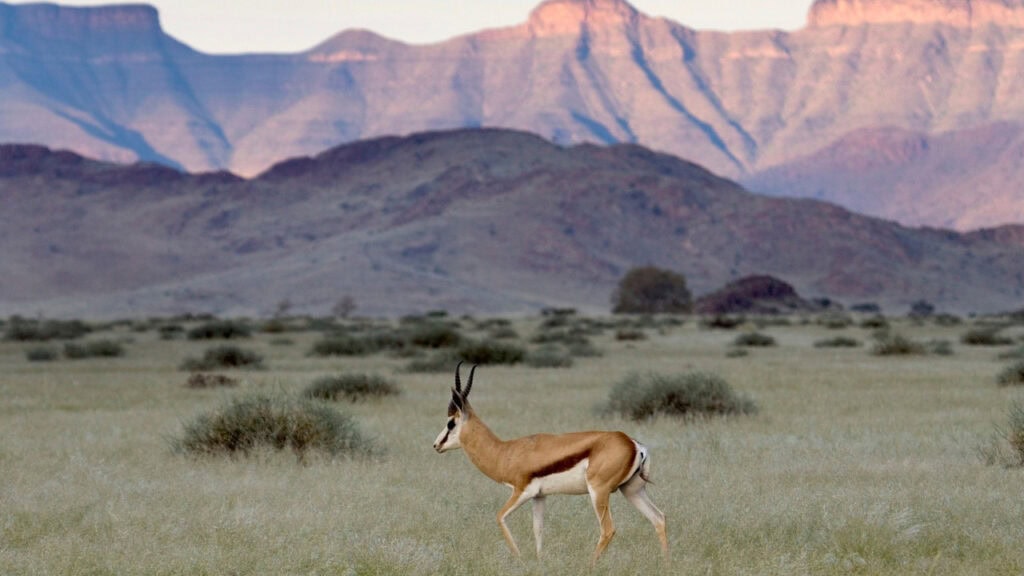
Join us as we take a closer look at the 10 best places to visit for photographic safaris in Namibia:
Sossusvlei and Deadvlei
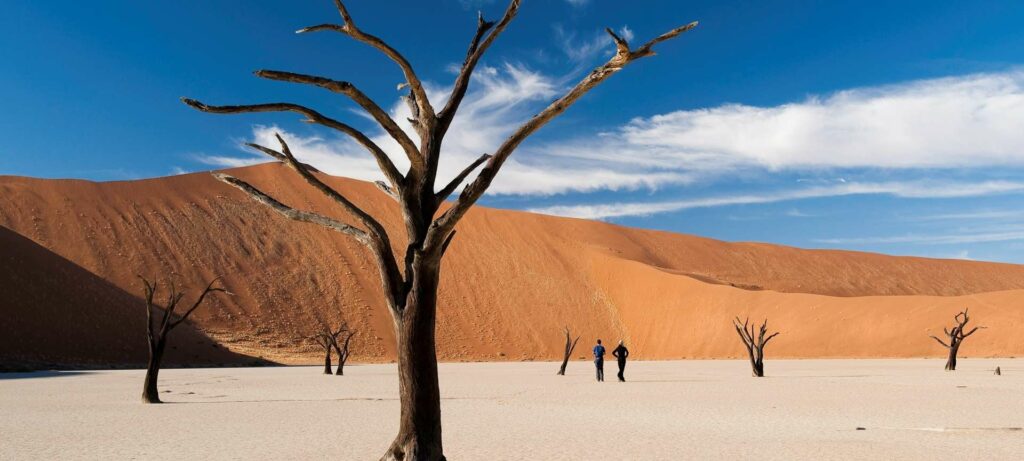
Situated in the arid Namib Desert, these renowned salt and clay pans are surrounded on all sides by striking red sand dunes that are some of the world’s highest. The white clay and radiant dunes contrast beautifully to create a surreal landscape (especially during the golden hours at sunrise and sunset) and Deadvlei’s iconic dead camelthorn trees make for particularly photogenic, sun-scorched subjects.
Etosha National Park
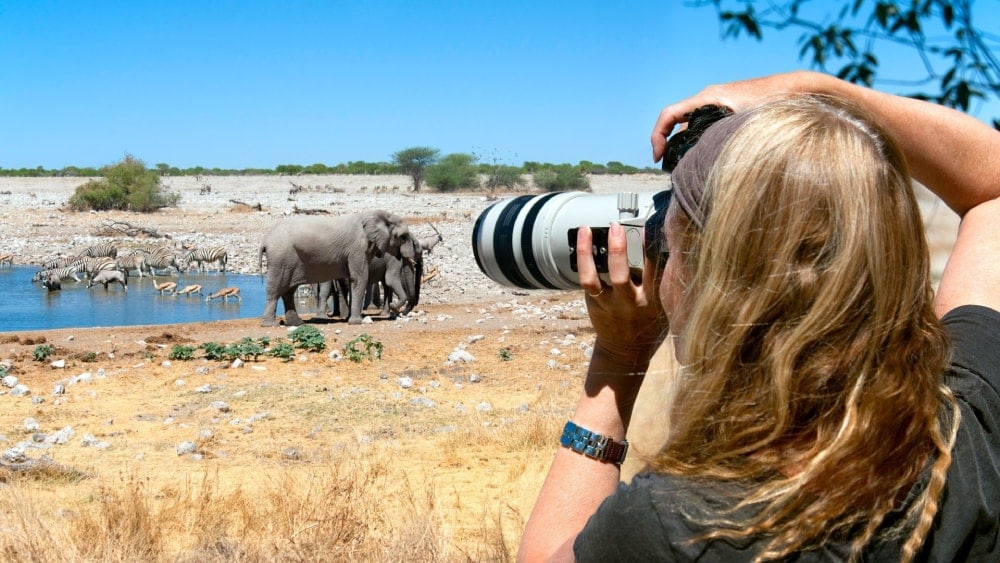
Possibly Namibia’s most impressive wildlife reserve, Etosha plays host to a wide variety of animals including rhinos, elephants, lions, giraffes, and zebras, to name just a few. The real star here is the Etosha Pan, a giant salt flat that will leave you mesmerized by its sheer scale. Etosha is an excellent destination for wildlife photography and is best visited during the dry season when the game congregates around the park’s waterholes.
Fish River Canyon

The home of the second-largest canyon in the world, this destination offers landscape photographers endless jaw-dropping views. Get there at sunrise and sunset to capture the canyon’s rim under excellent natural lighting conditions. There’s also the opportunity to grab that shot of a lifetime from a variety of vantage points, so pack your hiking boots and pick your spot amongst the rocky, but ruggedly beautiful, terrain.
Skeleton Coast
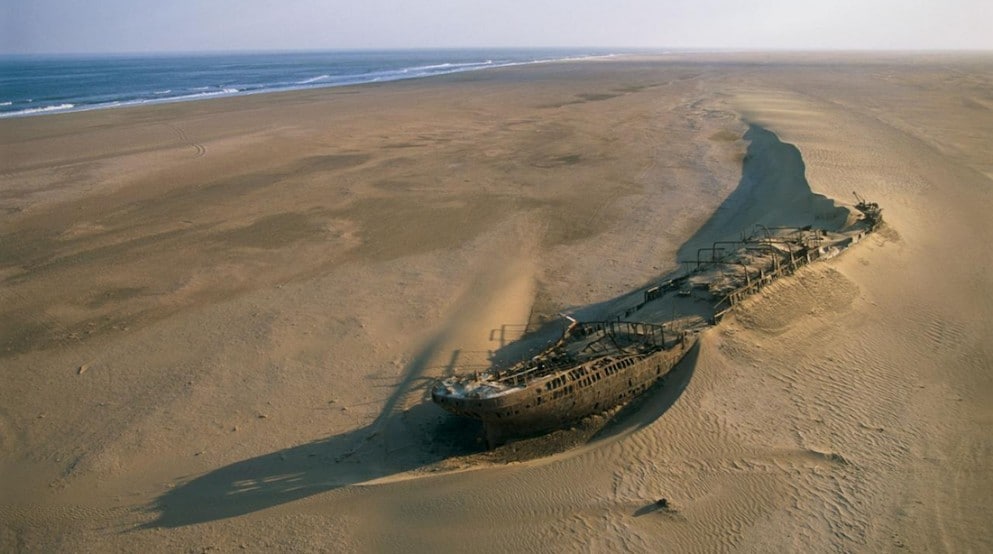
Famous for its shipwrecks, whale bones, and moody landscapes, this desolate stretch of the Namibian coastline provides an otherworldly backdrop for photography. The cold Atlantic Ocean pounds the shore and deep fogs haunt the eerie, but starkly attractive, landscape, creating an almost mystical appeal. Wildlife photographers should head to the Skeleton Coast National Park to capture the renowned desert elephants.
Kolmanskop Ghost Town
![]()
Located in the Sperrgebiet National Park, Kolmanskop was once a thriving diamond mining town. When better prospects appeared, the town was abandoned and has slowly but surely been reclaimed by the creeping desert sands since 1956. A range of abandoned buildings with remarkably well-preserved interiors (partly submerged in sand) make for haunting scenes and offer striking photographic opportunities.
Namib-Naukluft National Park
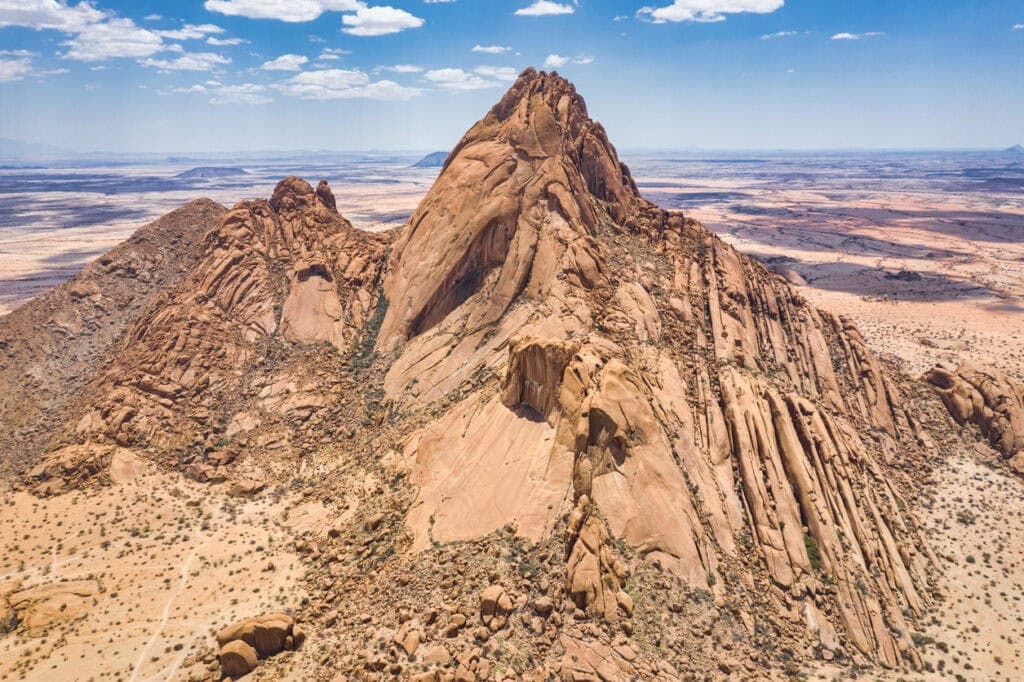
Featuring a diversity of terrains, including towering mountain ranges, vast gravel plains, and gaping canyons, Namib-Naukluft National Park is an alluring destination for landscape photographers. Of particular note is the Moon Landscape area, which bears a striking resemblance to the surface of the moon, and makes for surreal photographs. Wildlife photographers will have the chance to spot black rhinos, Hartmann’s mountain zebra, springbok, and giraffes.
Spitzkoppe
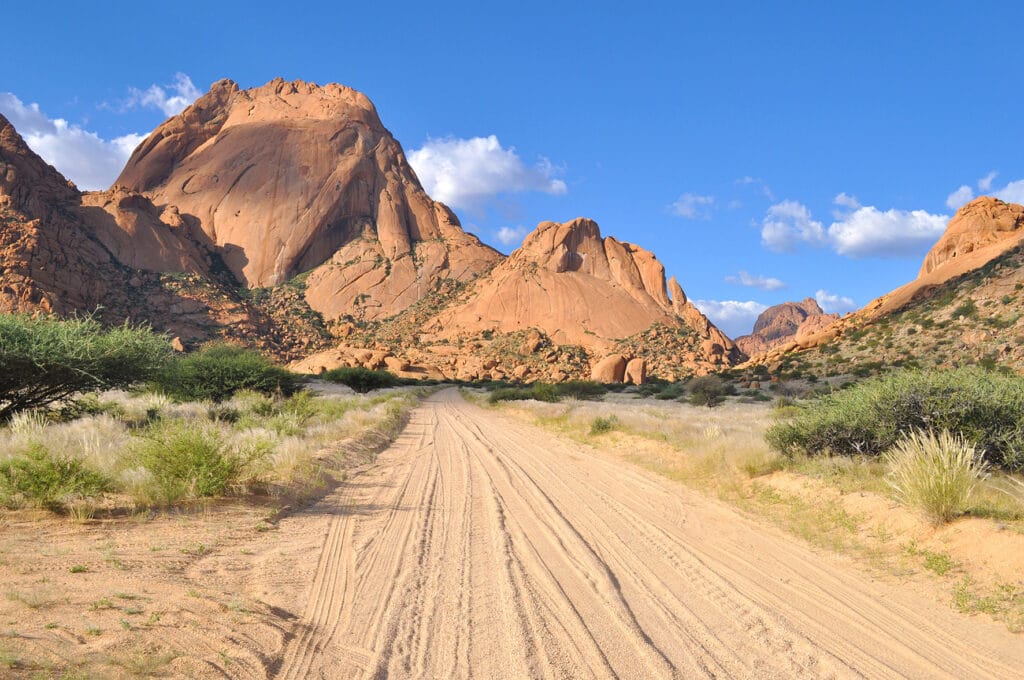
Often called the “Matterhorn of Namibia”, this granite peak provides excellent opportunities to shoot iconic photographs amidst a landscape of massive boulders and intriguing rock formations. Astrophotographers can look forward to capturing the starry night sky and Milky Way with zero light pollution against rocky silhouettes. While you’re here, it’s also worth touring the iconic Rock Arch and ancient San murals.
Kaokoland
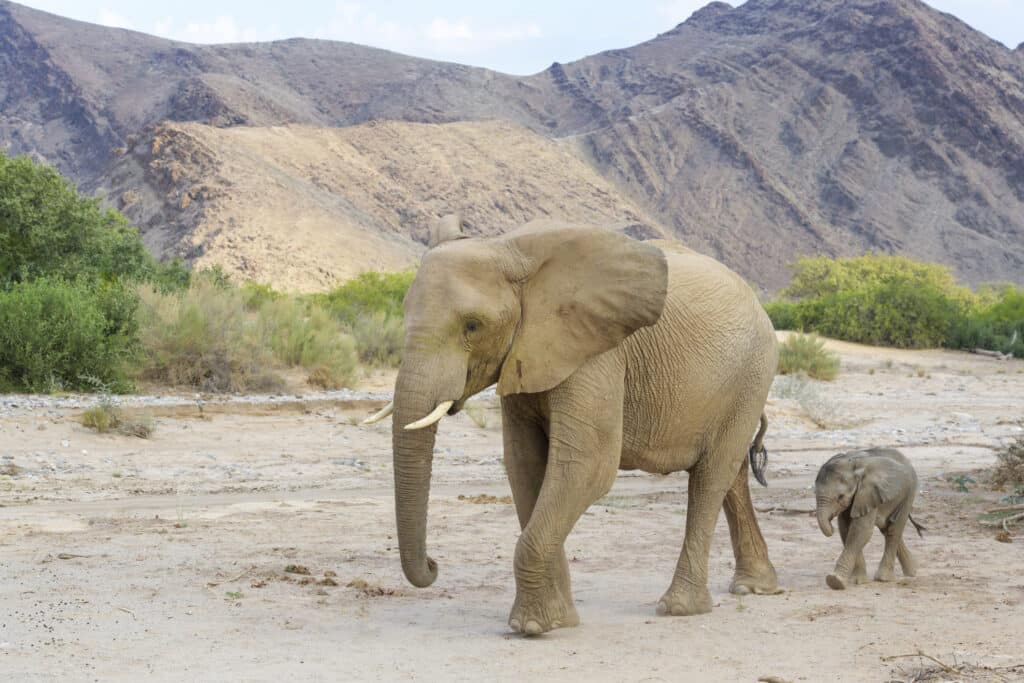
Situated in the northwestern region of Namibia, the vast and arid Kaokoland features a landscape of rugged mountain ranges and dry riverbeds. It’s also home to the Himba people, whose distinctive appearance and culture make for excellent subjects – just remember to ask for permission before you take any photographs. Wildlife photographers will have the chance to spot elephants, giraffes, rhinos, and herds of zebras, among other animals.
Damaraland

A major drawcard in Damaraland is Twyfelfontein, the site of numerous ancient rock engravings and petroglyphs. These works seem to depict the lives of some of the earliest inhabitants of the region. Damaraland’s unique geological formations, such as Burnt Mountain and Organ Pipes, make for striking photographs, while wildlife photographers will have plenty to shoot here, with a range of desert-adapted animals.
Cape Cross Seal Reserve
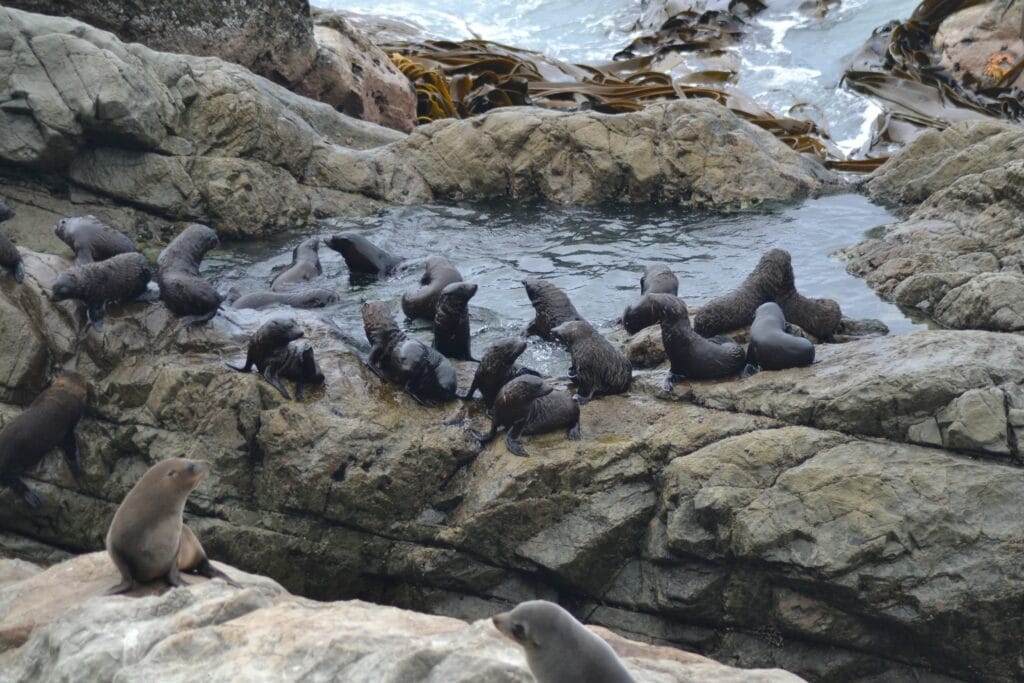
Situated along Namibia’s Skeleton Coast, the Cape Cross seal reserve plays host to one of the largest Cape fur seal colonies on the planet. This noisy location is a treat for wildlife and documentary photographers, with thousands of seals covering this rocky piece of the coast year-round. Peak breeding season runs from November to December, with the best chance to get photos of the growing pups from December to June.
Author: Adelle Bell
Published: 22 November 2023
Last Update: 30 January 2024